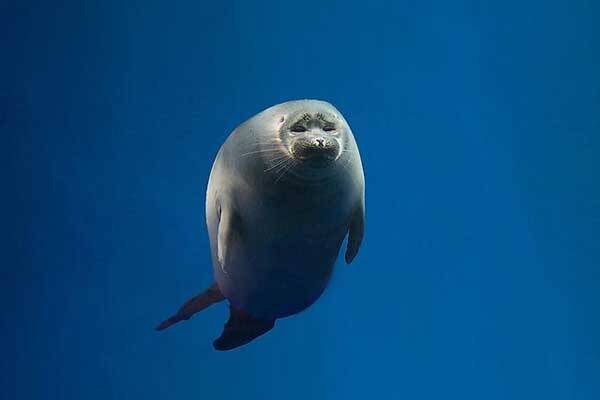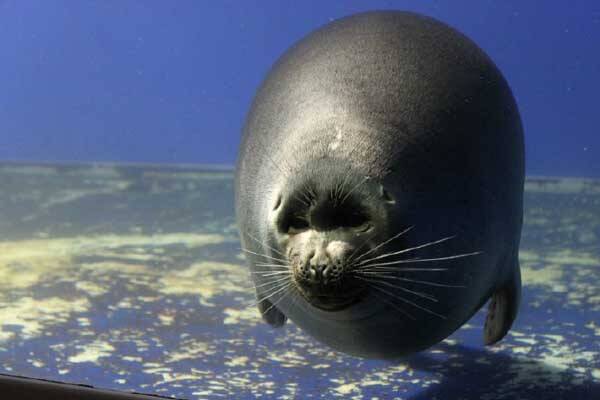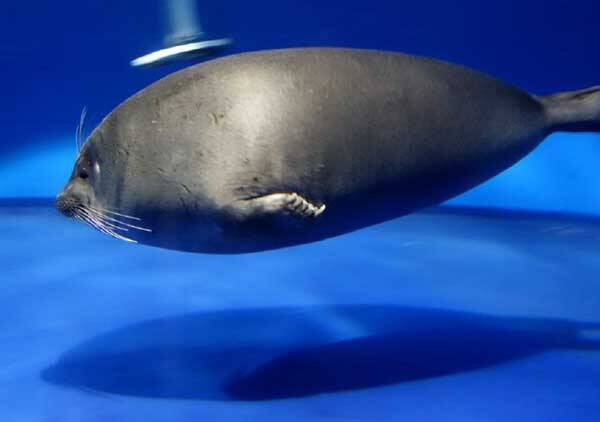Phoca sibirica
IUCN
LCBasic Information
Scientific classification
- name:Phoca sibirica
- Scientific Name:Phoca sibirica,Baikal Seal,Siberian seal, freshwater seal
- Outline:Carnivora
- Family:Phocaea
Vital signs
- length:1.1-1.4m
- Weight:40-45kg
- lifetime:20-23years
Feature
It has a round body and is the only freshwater seal in the world.
Distribution and Habitat
Only distributed in Lake Baikal, Russia, 2,000 kilometers from the sea.
There are traces of seals throughout Lake Baikal, but they prefer to stay away from the lakeshore, on the more secluded central islands, often with dozens or even hundreds of them basking in the sun on the white pebbles.
Appearance
The body is spindle-shaped. The maximum body length is 1.4m, but the average body length is smaller, and the individuals raised in Europe and the United States are roughly around 1.1m. The head is round. The skull base is 181mm long. The number of teeth is 34. The body color is relatively uniform, with a dark silver-gray back and a light yellow-gray belly. There are few spots and no ring-shaped spots.
Details
Baikal Seal (Phoca sibirica), also known as Baikal Seal in English, lives in the Baikal Lake area of Russia. It is the only freshwater seal in the world and also the smallest seal species in the world.

The Baikal seals have long and strong claws that can break through the ice and open the hole for air when the lake is frozen. Their unique circulatory system can store a lot of oxygen, so they can go nearly an hour without breathing, allowing them to dive to a depth of 300 meters underwater. They like to move in groups. Individuals have high IQs and can perform many shows. For five months of the year, the surface of Lake Baikal is frozen to a thickness of about 90 centimeters, and the average temperature in winter is minus 38 degrees Celsius. However, sunlight can penetrate the ice and transfer heat into the lake water, making the lake water temperature in winter close to that in summer, thus providing abundant food for seals. Due to their huge size (adult seals weigh more than 100 kilograms), seals have to eat three or four kilograms of fish every day, which they have to obtain by hunting at night. The favorite food of Baikal seals hides deep in the water during the day, and only at night do they come to the upper water surface driven by hunger.

Baikal seals prey on various fish in the lake day and night. In addition to being occasionally hunted by black bears, the main natural enemy of seals here is humans. From the end of February to the beginning of April every year, when the surface of Lake Baikal is frozen, it is the breeding season for Baikal seals. Females generally give birth to only one cub per litter. They lay nests and give birth on the floating ice in February and March. The young are covered with long, thin white hair, which is shed after 2 to 3 weeks. The lactation period is about 3 months. Females reach sexual maturity at an average of 3 to 6 years, and males at 4 years.
The scientific community generally believes that the Baikal seals should come from the Arctic Ocean, because they are most closely related to the ringed seals there. The fat and round seals are quite agile in the water, and their swimming speed can reach 20 kilometers per hour. The seals have flipper-shaped limbs, and the hind limbs are connected to the tail, always facing backwards, and they cannot walk, so they are very clumsy on land. Therefore, scientists believe that the ancestors of the ringed seals should have come here via the Yenisei River and its tributary, the Angara River.

After hunting in the early 20th century, the Baikal seal population increased by more than 100,000 individuals from the 1970s to the early 1990s; in 2002, the number of Baikal seals (including pups) was between 82,000 and 115,000; the Russian Ministry of Natural Resources (Russian Ministry of Natural Resources According to the World Conservation Union's Red List of Threatened Species in 2016, the Baikal seal population increased from 97,400 in 2012 to 108,200 in 2013. The IUCN Red List of Threatened Species in 2016 reported an estimated total of 54,000 seals worldwide.
People have long hunted seals for meat and fur, with about 10,000 killed each year. And hunters often don't spare young seals, causing the seal population to age. At the same time, coupled with serious industrial pollution, the number of Baikal seals has dropped sharply from 104,000 to 67,000. If effective protection measures are not taken, the Baikal seals in the ringed seal family will be on the verge of extinction in 5 to 7 years. For this reason, many Russian experts have called on the government to strictly prohibit the commercial killing of Baikal seals. Now that Baikal seals have been listed as protected animals, their survival and safety have begun to be increasingly guaranteed.
Listed in the 2016 IUCN Red List of Threatened Species ver 3.1 - Least Concern (LC).
Listed in the second level of the "List of National Key Protected Wildlife in China".
Protect wildlife and eliminate game.
Maintaining ecological balance is everyone's responsibility!








